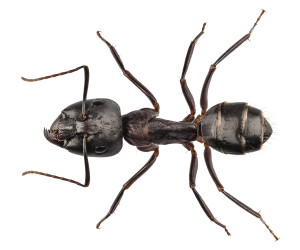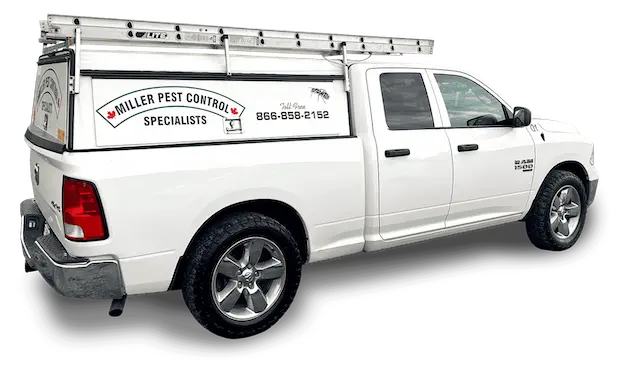Carpenter Ants

Pest Control: How to Get Rid of Carpenter Ants
A full interior and exterior treatment consist of a visual inspection of “hot spot” areas, treatment of cracks and crevices, wall voids, attics, crawl spaces, window and door frames, baseboards, electrical outlets, pipe chases, decking, tree bases and stumps, and perimeter of the structure.
Suggestions will also be made for control measures such as removing overhanging tree limbs, dead tree stumps, sealing gaps and cracks, etc. Treatment can either be a combination of chemical/residual/ULV or bait and dust. Both are equally effective, but bait and dust generally are a little slower to take effect.
A bait and dust carpenter ant treatment requires a minimum of 4 visits, 2 weeks apart. If the colony has not been eradicated at the time of treatment, they will generally dead within 2 weeks.
The treatment is fully warrantied for the season, therefore, if after 2 weeks following treatment there are still signs of ant activity, we will return to repeat the procedure to specific areas or all areas, if necessary.
We recommend all occupants, including pets, vacate the premises for a minimum of 4 hours. Children under 1 year and pregnant women, we recommend 24 hours.
Each year after the initial treatment, Miller Pest Control highly recommends having an exterior preventive treatment. This treatment will help reduce the risk of re-infestation on the interior of the structure and re-guarantees the original interior work.
How to Identify a Carpenter Ant Infestation
- Carpenter ants are one of the largest ants in North America, ranging from 3.4 to 13 mm long.
- The most common colour is black, but some can have reddish or yellowish coloration.
- Carpenter ants reside both outdoors and indoors in moist, decaying or hollow wood.
- Some common signs of a Carpenter Ant infestation in your home are: Sight of ants on the premises, sawdust recurring in an area, and hearing what sounds like crinkling Saran wrap or cellophane within the walls.
- Seeing large-winged reproductives is generally a sign that carpenter ants have been present for 3-5 years in the structure and the colony is well-established.
How to Prevent a Carpenter Ant Infestation
- Keep your house clean, especially the kitchen, as ants are attracted to food sources.
- Check attic vents and repair any damaged screens.
- Move firewood piles away from the home and remove dead tree stumps.
- Caulk around windows and eliminate other moisture issues including any wood on soil contact.
Possible Health Concerns
- When provoked, the carpenter ant uses its mandibles to bite and potentially ward off an intruder.
- For some people, bites may swell and become inflamed. Bite marks can take between three and eight days to disappear.
- Ants can sometimes carry harmful bacteria, which could potentially contaminate your food.
About Carpenter Ants
- Ants have colonized almost every landmass on Earth. The only places lacking indigenous ants are Antarctica and a few remote or inhospitable islands.
- Ants can lift and carry more than three times their own weight
- A queen or queens head the ant colonies. Their function in life is to lay thousands of eggs that will ensure the survival of the colony.

